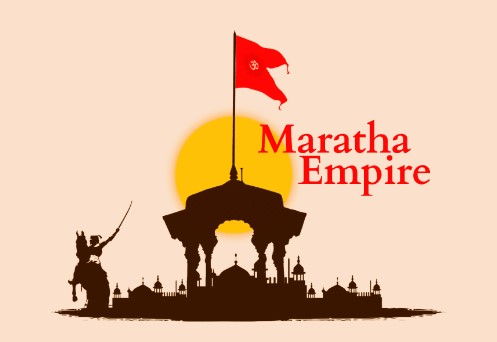
1.SHIVAJI (1674-80)
Shivaji belonged to the Bhonsle Clan of Marathas. Shivaji’s father Shahji Bhonsle was a military commander under Nizam Shahi, ruler of Ahmednagar.
Shivaji was born to Jijabai in the hill fitness of Shivner.
Shivaji’s early career and life was influenced by Jijabai, his mother, Dadaji Kondadev, the manager of his father’s Jagir and Guru Ramdas, his spiritual teacher.
Dadaji Kondadev gave him training in civil and military administration.
Before that, in 1646, he conquered the fort of Torna and built forts at Raigarh and Pratapgarh. In 1647, he assumed full charge of his Jagir.
In 1659, Shivaji killed Afzal Khan, Ambassador of Ali Adil Shah (Sultan of Bijapur), in a meeting with his tiger paws. The Sultan then acknowledged the independent status of Shivaji
Later, Shaisha Khan, a Governor of Deccan, was deputed by Aurangzeb to put down the rising power of Shivaji in 1660. Shivaji lost Poona and suffered several defeats, till he made a bold attack on Shaista’s military camp at night and plundered Surat and later Ahmednagar.
Raja Jai Singh of Amber was then appointed by Aurangzeb to put down Shivaji (1665) and Jai Singh succeeded in besieging Shivaji in the fort of Purandar (1665) was signed according to which, Shivaji ceded some forts to the Mughals in their attack on Bijapur.
Shivaji visited Agra with his son Shambhaji in 1666. He was put on house arrest but escaped from there.
He, very soon, conquered the forts which he had surrendered to the Mughals. He defeated the Mughal forces in the Battle of Salher in 1672.
He was crowned in 1674 at Raigarh and assumed the title of Haindava Dharmodharak (protector of Hinduism) and Chhatrapati. He became the sovereign ruler of Maharashtra. He died in 1680.
2.SHIVAJI’S ADMINISTRATION
Shivaji divided the territories under his rule into three provinces , each under a Viceroy. Provinces were divided into Prants, which were subdivided into Parganas or TARAFS. The lowest unit was a village, headed by a headman or patel.
Shivaji was helped by Ashtapradhan (eight ministers), which was unlike a Council of Ministers, for there was no collective responsibility. Each minister was directly responsible to Shivaji.
His administrative reforms were guided by Malik Amber of Ahemdnagar.
3.SHIVAJI’S REVENUE ADMINISTRATION
Assessment of land revenue was based on measurement. The Kathi of Amber was adopted as the unit of measurement.
Chauth was on-fourth of the land revenue paid to the Marathas so as not to be subjected to Maratha’s raid.
Sardeshmukhi was an additional levy of 10 percent (1/10th) on those lands of Maharashtra, over which the Marathas claimed hereditary right, but which formed part of the Mughal empire.
4.MARATHAS AFTER SHIVAJI
There was a dispute of succession between Sambhaji and Rajaram.
Son of Shiva, Sambhaji (16/80-89) succeeded the throne. He was an incapable ruler and poor diplomat.
Prince Akbar, the rebellious son of Auragzeb took shelter with him. Sambhaji was executed by Aurangzeb and his infant son, Shahu, was taken captive by Auragzeb. Sambhaji was succeeded by Rajaram in 1689.
Rajaram (1689-1700) was killed in 1700 by Auragzeb. His widow Tarabai put her infant son, Shivaji II, on the throne. Rajaram created the new Ministerial post of Pratinidhi. Thus, the total number of ministers became nine.
After Aurangeb’s death in 1707, Shahu, the grandson of Shivaji and son of Sambhaji was released by Bahadur Shah. He claimed the throne and this led to a civil war between Shahu and Tarabai. Shahu emerged victorious in the Battle of Khed, with the help of Balaji Vishwanath. After this, Shahu ruled from Satara and Tarabai from Kolhapur. From now onwards, the rule of Peshwa started. They became virtual rulers of the state.
SHIVAJI’S ASHTAPRADHAN
